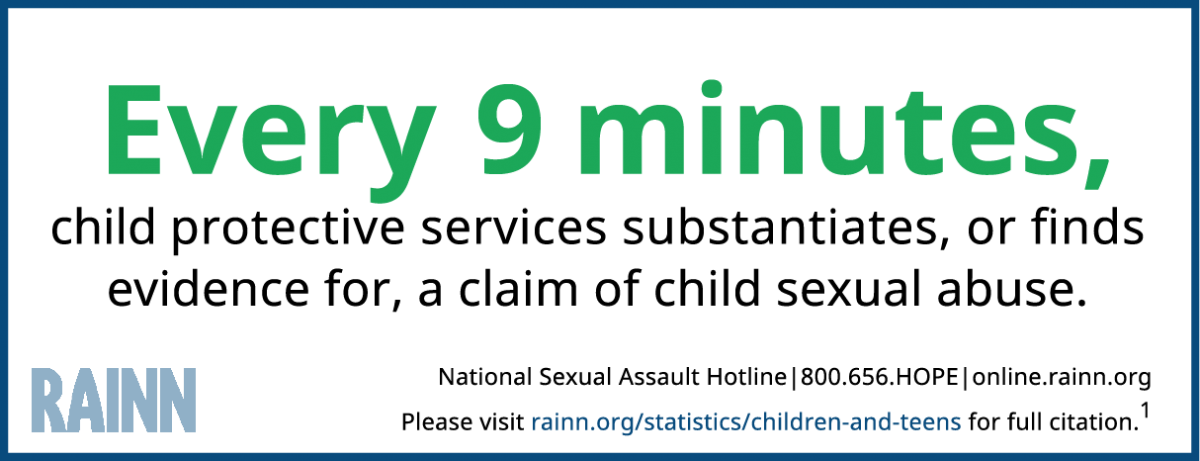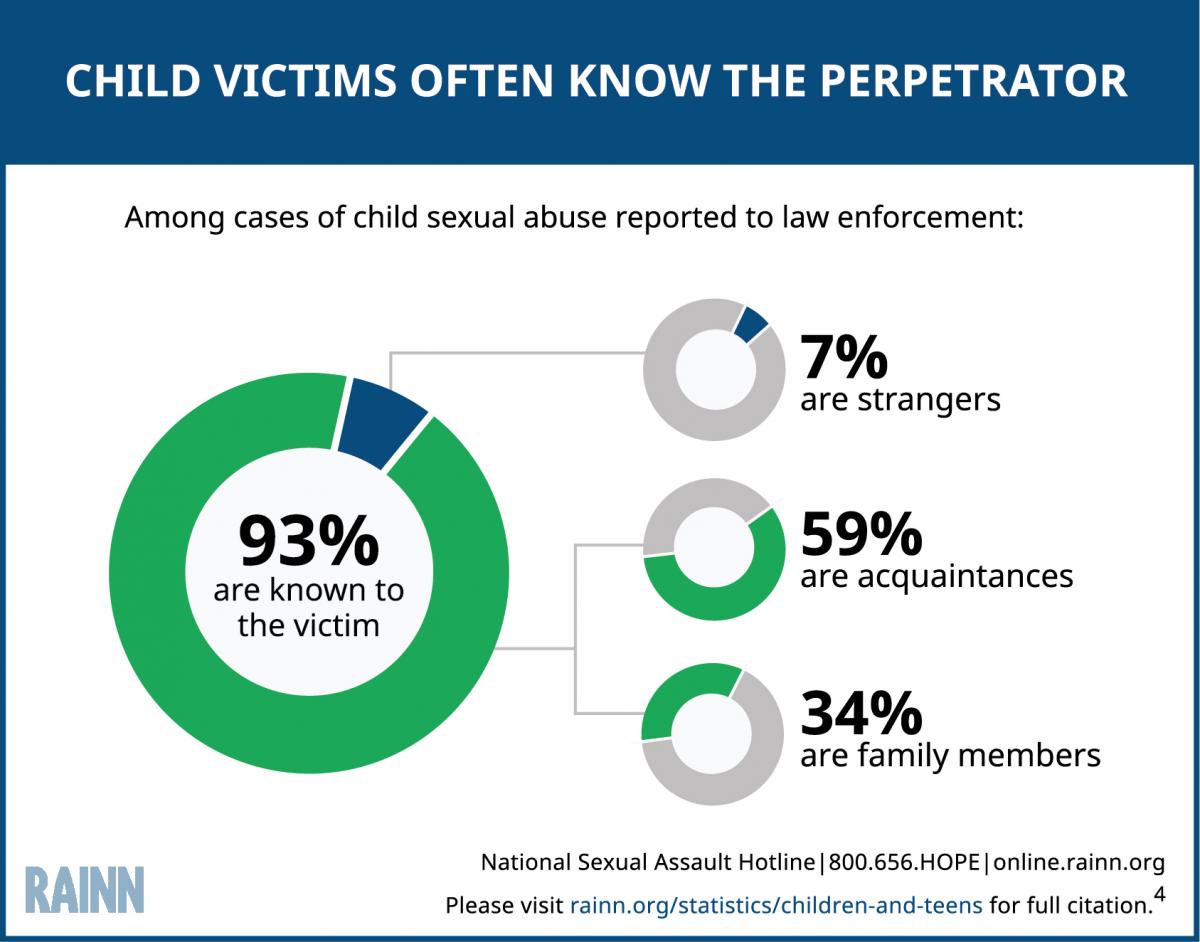Child Sexual Abuse Is a Widespread Problem

- In FY16 alone, Child Protective Services agencies substantiated, or found strong evidence to indicate that, 57,329 children were victims of sexual abuse.1
.

- One in 9 girls and 1 in 20 boys under the age of 18 experience sexual abuse or assault.3
- 82% of all victims under 18 are female.4
- Females ages 16-19 are 4 times more likely than the general population to be victims of rape, attempted rape, or sexual assault.2
The effects of child sexual abuse can be long-lasting and affect the victim's mental health. Victims are more likely than non-victims to experience the following mental health challenges:5
- About 4 times more likely to develop symptoms of drug abuse
- About 4 times more likely to experience PTSD as adults
- About 3 times more likely to experience a major depressive episode as adults
Perpetrators of Child Sexual Abuse Are Often Related to the Victim

- Out of the sexual abuse cases reported to CPS in 2013, 47,000 men and 5,000 women were the alleged perpetrators.6
- In 88% of the sexual abuse claims that CPS substantiates or finds supporting evidence of, the perpetrator is male. In 9% of cases they are female, and 3% are unknown.6
.
Understanding RAINN’s statistics
Sexual violence is notoriously difficult to measure, and there is no single source of data that provides a complete picture of the crime. On RAINN’s website, we have tried to select the most reliable source of statistics for each topic. The primary data source we use is the National Crime Victimization Survey (NCVS), which is an annual study conducted by the Justice Department. To conduct NCVS, researchers interview tens of thousands of Americans each year to learn about crimes that they’ve experienced. Based on those interviews, the study provides estimates of the total number of crimes, including those that were not reported to police. While NCVS has a number of limitations (most importantly, children under age 12 are not included), overall, it is the most reliable source of crime statistics in the U.S.
We have also relied on other Justice Department studies, as well as data from the Department of Health and Human Services and other government and academic sources. When assembling these statistics, we have generally retained the wording used by the authors. Statistics are presented for educational purposes only. Each statistic includes a footnote citation for the original source, where you can find information about the methodology and a definition of terms.
Learn more about RAINN's statistics.
Sources:
- United States Department of Health and Human Services, Administration for Children and Families, Administration on Children, Youth and Families, Children’s Bureau. Child Maltreatment Survey, 2016 (2018).
- Department of Justice, Office of Justice Programs, Bureau of Justice Statistics, Sex Offenses and Offenders (1997).
- David Finkelhor, Anne Shattuck, Heather A. Turner, & Sherry L. Hamby, The Lifetime Prevalence of Child Sexual Abuse and Sexual Assault Assessed in Late Adolescence, 55 Journal of Adolescent Health 329, 329-333 (2014)
- Department of Justice, Office of Justice Programs, Bureau of Justice Statistics, Sexual Assault of Young Children as Reported to Law Enforcement (2000).
- H.M Zinzow, H.S. Resnick, J.L. McCauley, A.B. Amstadter, K.J. Ruggiero, & D.G. Kilpatrick, Prevalence and risk of psychiatric disorders as a function of variant rape histories: results from a national survey of women. Social psychiatry and psychiatric epidemiology, 47(6), 893-902 (2012).
- United States Department of Health and Human Services, Administration for Children and Families, Administration on Children, Youth and Families, Children’s Bureau. Child Maltreatment Survey. Exhibit 5-2 Selected Maltreatment Types by Perpetrator’s Sex. Page 65. (2013).